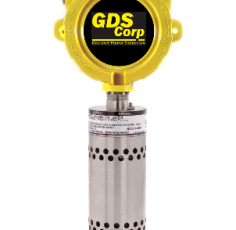In more and more industries, natural gas leak detectors have become key components of safety programs. From power generators to industrial processing to transportation companies, having natural gas leak alarms can keep employees safe from fires or explosions. Because of this, it’s vital to know the important features that make these alarm systems so crucial in today’s advanced industrial facilities.
Immediate Gas Detection
Since natural gas is composed mostly of methane, the gas itself is colorless and odorless. However, while this may not sound particularly harmful, the fact is natural gas is highly explosive and must be monitored on a constant basis. Therefore, when choosing an alarm, make sure it has the capability to detect dangerous gas levels immediately. In most cases, this involves using natural gas detector alarms that can be calibrated both on site and from remote locations.
Digital Network Integration
To make sure gas levels are detected and able to be maintained at safe levels, a natural gas detector must also be able to be easily integrated into a facility’s digital wireless network. Because of this, companies today use wireless natural gas detectors that have Ethernet capabilities as well as high-performance microprocessors. By using detectors with these features, companies can be sure gas levels will be monitored in real-time and have data sent to emergency personnel, where it can be analyzed not only at monitoring centers, but on mobile devices such as smartphones and tablets.
High Visibility Displays
Since these detectors will be installed in various types of industrial facilities, it’s important that they be able to alert workers to impending dangerous conditions. To do so, they rely on high-visibility displays that can be easily seen by those nearby. Using lighting that changes colors from yellow to red depending on the level of danger, the detectors make it very easy for workers to assess the situation and evacuate if necessary. Along with the high-visibility displays, the detectors also come with other alarms such as warning strobes, lights, and horn sounders. By having this capability, the detectors can be installed in virtually any type of work environment. If workers are located nearby, the warning strobes and lights can alert them to danger, while the horns will work well in areas where workers may be spread out and unable to see displays or lights.
No False Alarms
Because these detectors have been equipped with power-up and post-calibration programmable delays, they are virtually assured of never producing false alarms. This is extremely important, since the detectors can monitor any combination of toxic or combustible gases that may be present in the atmosphere. Supporting both local and remote sensors, they have security settings that allow managers to lock critical parameters. By doing so, this can assure the detectors will produce readings that are accurate and reliable, since only managers and select personnel will be able to calibrate the detectors. And because they are CSA certified for Class I, Division I hazardous areas, they work well in virtually any type of facility.

